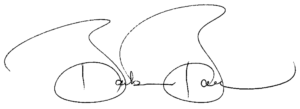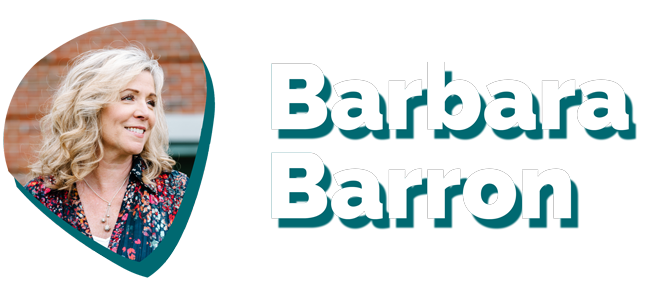by Barbara Barron | Posted September 27th, 2017
Sure, it’s summer but before we know it, it’ll be that time of year!
In development offices all over the country, your peers will be doing just what you’ll be doing: toiling over the Annual Fund Letter. The choices you have to make feel endless: what format will we use? Who is going to sign all of them?!
And because we’re confronted with so many choices, we can get easily mired in the details. We can lose sight of what we’re really trying to do.

And what are we trying to do? It’s simple. We’re trying to:
- grab the readers’ attention
- touch their hearts
- inspire them to give
But, shoot, with the wild start of the school year, there’s just so much else to do. And yes, we need to get this appeal launched. So what do we do? We just write a crummy template and try to obscure the fact that it’s a template by inserting a slew of “personalized” details!
Look, if there’s one thing I know about an Annual Fund Letter, it’s that if you set out to write a template, it reads like a template. We’re fooling no one. Especially not the sophisticated donor.
So how do we avoid doing that?
Here are a few tips I’ve found helpful to stay focused on what’s important when writing that first draft:
Tip #1: Write to your VIPs
The best approach is to start by writing to one person. Why? Because a letter written to everyone is written to… no one. So we hone in. We stop thinking of our donors as a group, a “them” and begin a conversation with an individual. We invite one person to be a part of what makes our mission so relevant and imperative. One person.
Choose a loyal and dedicated donor to visualize as you write. Go ahead! Conjure that person in your mind and write to him or her. Let this prime your creative pump.
You’re going to need to create that specific donor’s letter anyway, so why not start there?
Here’s the general movement of it:
- Speak right to her.
- Tell her how much her support has mattered and still matters.
- Share a story about a student or a teacher who embodies the school’s mission in action.
- Show her the impact of her gift.
Don’t make it perfect. Just get a reasonable first draft on paper. You can polish later.
Now write to another top donor. Stay with your heroes. As you go, you’ll sharpen your language and start to write your best work. You may also experience an infusion of some much-needed verve to your mood because you’ll be focused on wonderfully generous people. Your tone will be authentic and grateful, and your appeal far more compelling.
Once you have a handful of VIP letters done, use them as the recipe to create appeals for the rest of our community. Work your way out from the heartbeat center of leadership donors and encourage others to join! You can retell the stories you chose with authority and pride.
Eventually, you will have to work by constituencies — but never forget that each and every donor is an individual. So let’s stop thinking of them as the dreaded “them”, okay?

Tip #2: Less is Definitely More
Quality over quantity. Seriously.
Who reads a two-page, 11-point letter that is so burdened by facts and figures that all the joy and energy are squelched? Instead of long, boring Annual Fund Letters that include too much of the wrong detail, you want to create a clean suite of appeals that actually appeal to the hearts and minds of your supporters.
Again, it’s all about stories. Specific ones! One student or one faculty member thriving in our schools because of the support from our community has more impact than the laundry list of “stuff we’ve done.”
Sure, you can rave about the dozens of athletic teams and clubs and courses you offer. But the truth is, that’s the content we as readers skim over. Tell one story and you keep your reader’s attention. And if you keep their attention, you stand a better chance of your appeal being, well… appealing.
While we’re on the subject of effective writing: are you already thinking of your thank you letters and receipts? Studies routinely show that donors don’t feel thanked (much less appreciated) for their gifts because we aren’t truly, properly thanking them. So we want to do that. A tiny handwritten note scribbled on the bottom of a long, cold, official thank you/receipt not only feels like an afterthought but also a clear signal to your donor that what’s she’s holding is a form letter.
Clang! Thank you letters are a chance to offer real stewardship. The kind that keeps stakeholders supporting our schools. Never forget that.
And also never forget what you absolutely can not leave out.
- A real ask.
- A specific amount.
Your reader needs to know what you’re asking for.
And make it a bold ask. After all, isn’t your school worth it? Think of that one student or teacher whose story you’ve just told. If you feel nervous, it may help to remember: your donor is a grown up and philanthropy is, in the end, voluntary. She or he will ultimately choose the gift amount.
And I say that’s great! Our job is to invite them to the table. Invite them into an opportunity. A chance at being the lifeblood of a school.
Time and again, the more I ask donors to increase their gifts, the more they do. Not every donor. And not always as much as I request. But much of the time, most of them do. Try it.

Tip #3: Ink It!
Sign the letters. I mean physically sign them. Do not use an electronic signature. (Re-read above about how a template fools no one. Same goes for an electronic signature.) Don’t think you have the time? Reframe!
- Get a fresh cup of your hot beverage of choice
- Sit in a spot with decent lighting
- Pop on an upbeat Pandora station, and get crackin’!
You are sending love letters to the people who make what happens in the classroom and athletic field and the stage and science lab possible. Each letter you sign is an invitation to someone to do something good. Noble even. Feel it with each stroke of your pen.
So much of what we do in this profession is geared towards the stewardship of others. That’s good and right. But it’s also important to remind ourselves of the good we are doing for our schools.
How many times has someone said “Oh, I could never do your job!’” Maybe. Maybe not. But, in this moment, take that sentiment in and feel the pride and satisfaction of doing important work, within a fine profession. It’s a whole lot more than simply signing letters, isn’t it?
Tip #4: Get a Fresh Set of Eyes
Share your best work with someone you trust who is more objective than you, the author. If you can, invest in an advancement consultant. Bring in a professional to work on this with you. (Obviously, I’m partial to this idea, as an advancement consultant myself…)
There is nothing that can replace an outside eye. Feedback from another person is the only true way to know what’s working and what isn’t.
And that’s it! Hopefully, at this point you’ve already started writing. (Did the playlist help? I hope so.)
My name is Barbara Barron, and I’m writing this blog to share advice on a profession that I adore.
I’ve been working in the field of Independent School Advancement for nearly 20 years. In that time, I’ve had the pleasure of creating and implementing successful Strategic Fundraising Plans for so many incredible schools. I’ve had the privilege of seeing real growth at The Carey School, Marin Primary & Middle School, Woodside Priory, Crystal Springs, Presidio Knolls and others. (Maybe we’ve met!)
Nothing makes me happier than seeing a struggling school start to thrive. My hope is that you’re here to make a positive change as well. I hope my advice can be a part of that change.
Shoot me an e-mail if you want to swap tips, or share your voice here.
Let’s do this, together.



